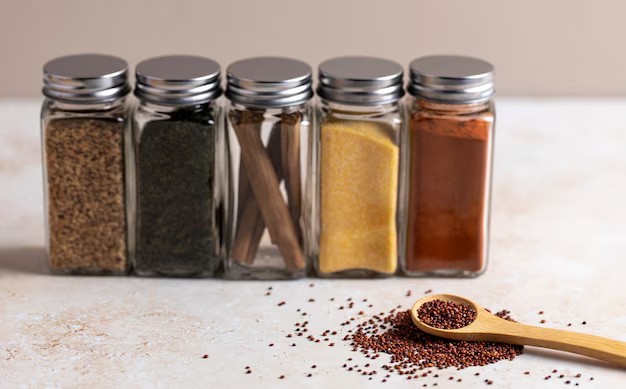Unlocking the Mysteries of Soy Sauce: How Long Does It Last in the Refrigerator?
When it comes to essential kitchen staples, soy sauce is often at the top of the list. Its savory, umami-rich flavor can magically enhance everything from sushi and stir-fries to soups and salads. But like any condiment, maintaining its quality and freshness is crucial for the best culinary results. One common question many home chefs ask is: How long does soy sauce last in the refrigerator? Let's delve into this flavorful topic, exploring the science behind soy sauce shelf life, tips for effective storage, and ensuring that your soy sauce stays fresh for every culinary creation.
The Composition of Soy Sauce
What Makes Soy Sauce Tick?
Soy sauce is an ancient condiment with a rich history, originating from Asia. Its unique flavor profile results from fermenting soybeans, wheat, salt, and water with specific molds, yeasts, and bacteria. This fermentation process breaks down proteins and starches, yielding amino acids and simple sugars that contribute to its distinctive taste.
Is Soy Sauce Naturally Preservative?
One of the significant benefits of soy sauce’s composition is its high salt content, which acts as a natural preservative. This saltiness, combined with its acidic nature from fermentation, helps to ward off spoilage and bacterial growth. However, while soy sauce is indeed robust against spoilage, it is not immune to losing flavor or quality over time, especially when not stored correctly.
Understanding Soy Sauce Shelf Life
Shelf Stability: Before Opening
Unopened soy sauce can remain stable and maintain its quality for a long time. Its shelf stability is due in part to its preservation-friendly ingredients. When stored in a cool, dark place away from direct sunlight, such as a pantry or cupboard, soy sauce can often last indefinitely. However, for best quality, it’s often recommended to consume it within two to three years from production.
Post-Opening: Do You Need to Refrigerate?
Once opened, the rules change slightly. Although soy sauce doesn’t necessarily require refrigeration due to its preservative nature, storing it in the refrigerator can extend its peak quality, preserving its complex flavors and aroma. This is especially true for varieties that might have less salt or additional flavorings. Consuming opened soy sauce within six months to a year when stored at room temperature is generally ideal for maintaining its best quality.
Key Factors Influencing Shelf Life in the Fridge
- Temperature stability: Soy sauce should be kept at a consistent, cool temperature to prevent quality degradation.
- Container type: Air-tight, non-reactive containers can prevent oxidation and contamination.
- Freshness cues: Any changes in aroma, color, or taste might indicate it's past its prime.
Spotting the Signs: Is It Still Good?
While soy sauce rarely goes bad in a way that can cause illness, it can degrade in flavor and appearance. It's essential to keep an eye out for signs of spoilage, including:
- Unpleasant odor: A sharp or off-smell can indicate potential spoilage.
- Color change: Darkening beyond its typical range might suggest oxidation.
- Texture: Any unusual thickness or sediment should be considered questionable.
Tips for Keeping Your Soy Sauce Fresh
Best Practices for Storage Longevity
To ensure your soy sauce stays fresher for longer, consider these practical tips:
- Refrigeration: Keep your opened soy sauce refrigerated to help maintain its taste and shelf life.
- Avoid contamination: Always use clean utensils and avoid pouring unused soy sauce back into the bottle.
- Seal tightly: Ensure the cap is securely fastened between uses to prevent air exposure.
- Dark bottles: If you notice any light exposure, storing it in an opaque container can help protect its integrity.
Related Culinary Uses and Innovations
Soy Sauce Beyond the Bottle: Versatile Uses
- Marinades: Perfect for meat and seafood to add depth and richness.
- Glazing: Adds a glossy, savory finish to roasted veggies or proteins.
- Seasoning: A splash in soups or stocks can elevate umami profiles.
Discovering Variations
Soy sauce comes in various forms, each with unique attributes and best uses:
- Light soy sauce: Sweeter and saltier, ideal for seasoning.
- Dark soy sauce: Thicker and richer, perfect for marinades.
- Tamari: Gluten-free alternative with a robust flavor.
- Reduced-sodium: Maintain flavor with less salt impact.
Experimenting in the Kitchen
Elevate your culinary creations with these soy sauce recipes:
- Soy dipping sauce: Mix soy sauce, honey, and garlic for a quick condiment.
- Soy-based vinaigrette: Blend with olive oil, vinegar, and mustard.
- Glazed tofu: Pan-fry tofu in soy sauce and honey for a savory-sweet delight.
Summary of Key Tips for Soy Sauce Lovers
Here's a handy checklist to ensure that your soy sauce remains at its flavorful best:
- 🧊 Refrigerate: Store opened bottles in the fridge to maintain quality.
- 🕵️ Inspect regularly: Check for changes in color, aroma, or taste.
- 🔒 Seal tightly: Keep the cap or lid snug to prevent air exposure.
- 🌡️ Stay consistent: Avoid temperature fluctuations by choosing a stable storage spot.
- 🍛 Get creative: Use soy sauce in marinades, glazes, and dressings.
In conclusion, understanding how to store soy sauce effectively in the refrigerator can make a significant difference in maintaining its quality and flavor. By applying these practical tips and embracing its versatility, you can enjoy all that soy sauce has to offer, enhancing meals with its unmatched umami essence. So go ahead, explore its potential, and savor the experience of well-preserved soy sauce in your culinary adventures!
